
Contents


The anaconda is one of the largest snakes on the planet. It can grow to an incredible 9 metres long and can weigh up to 250 kilograms. Anacondas are found in many countries in South America. They live in rivers and swamps and can stay under water for up to ten minutes at a time before coming up to breathe.


Some snakes kill their prey by injecting venom through a bite but not the anaconda. The anaconda is a member of the constrictor family.
When it attacks, it springs from the water and grabs hold of its prey. Then the anaconda wraps its body around its prey and squeezes hard until it stops breathing. The anaconda then eats its prey whole! It can take months for the anaconda to digest its prey. All animals can find themselves on the menu of this monstrous predator. Not even small crocodiles are safe. 

 Bull sharks but dont they live in salt water? Yes, correct, but one fact that you might not know is that they can also survive in fresh water!
Bull sharks but dont they live in salt water? Yes, correct, but one fact that you might not know is that they can also survive in fresh water!  Bull sharks are among the most aggressive sharks in salt water.
Bull sharks are among the most aggressive sharks in salt water.
However, now they have found alternative homes in fresh water, they are certainly a predator to be both respected and feared. 
 Teeth of a bull shark Scientists have studied why some bull sharks have made freshwater rivers and lakes their home. It is believed that large lakes are a safe place for them to breed and raise their young. With a huge abundance of food, bull sharks can easily survive in the freshwater habitats of Australia and America. The bull shark survives in fresh water by storing salt and using it slowly. This unique process allows the shark to move in and out of freshwater river systems as and when it pleases.
Teeth of a bull shark Scientists have studied why some bull sharks have made freshwater rivers and lakes their home. It is believed that large lakes are a safe place for them to breed and raise their young. With a huge abundance of food, bull sharks can easily survive in the freshwater habitats of Australia and America. The bull shark survives in fresh water by storing salt and using it slowly. This unique process allows the shark to move in and out of freshwater river systems as and when it pleases.
Bull sharks can grow to over 3 metres in length and weigh a staggering 230 kilograms. 
 The diving bell spider is a truly remarkable freshwater predator and is unique among spiders. When you think of a spider, it is out of water. Right? Well, not this one The diving bell spider is the only spider in the world to spend its life under water.
The diving bell spider is a truly remarkable freshwater predator and is unique among spiders. When you think of a spider, it is out of water. Right? Well, not this one The diving bell spider is the only spider in the world to spend its life under water. 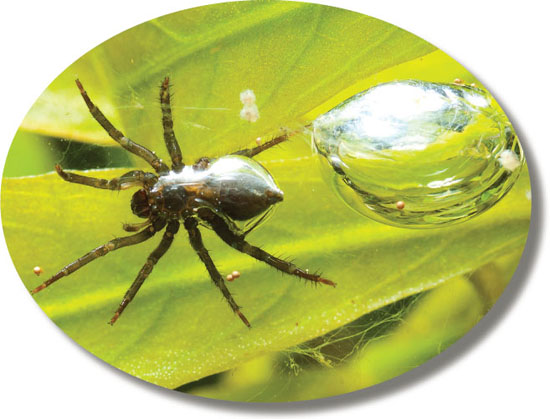

 This spider still needs to breathe air in order to survive so how does it do it? First, it spins a dome-shaped web between two plants under water. It then uses the hair on its legs to trap air in when it travels to the surface.
This spider still needs to breathe air in order to survive so how does it do it? First, it spins a dome-shaped web between two plants under water. It then uses the hair on its legs to trap air in when it travels to the surface.
Next, the diving bell spider travels back down to the dome. It releases the trapped air from its legs into the dome. Like other spiders, the diving bell spider eats flies and insects. It traps its prey in the dome-shaped web. Just like an ordinary land spider, its web is sticky. So when prey comes into contact with it, it gets stuck, leaving the diving bell spider free to feed.
These spiders can be found across Europe as well as in parts of Asia. It lives in small ponds and streams. 
 The electric eel is without a doubt one of the weirdest looking freshwater predators on the planet. Found in many rivers in South America, the electric eel can cause serious damage to any living creature that gets in its way. This is because the electric eel has the ability to generate 500 volts of electricity from its body!
The electric eel is without a doubt one of the weirdest looking freshwater predators on the planet. Found in many rivers in South America, the electric eel can cause serious damage to any living creature that gets in its way. This is because the electric eel has the ability to generate 500 volts of electricity from its body! 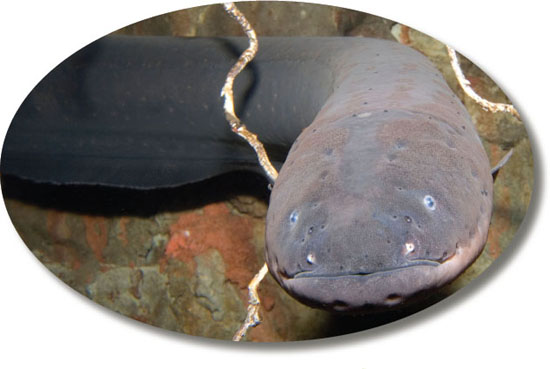

 When the eel releases electricity into the water, all the surrounding animals become stunned some more than others, depending on their size. The electric eel can then pick off its prey more easily.
When the eel releases electricity into the water, all the surrounding animals become stunned some more than others, depending on their size. The electric eel can then pick off its prey more easily.
Although electric eels live in fresh water, they can also be found on land. Thats because the electric eel is an air-breather and can survive out of water with ease. When in water, the electric eel must surface every ten minutes to inhale oxygen to breathe. If it doesnt, it will die. With some electric eels reaching over 2.5 metres in length and weighing over 18kg, this is one predator not to be messed with! 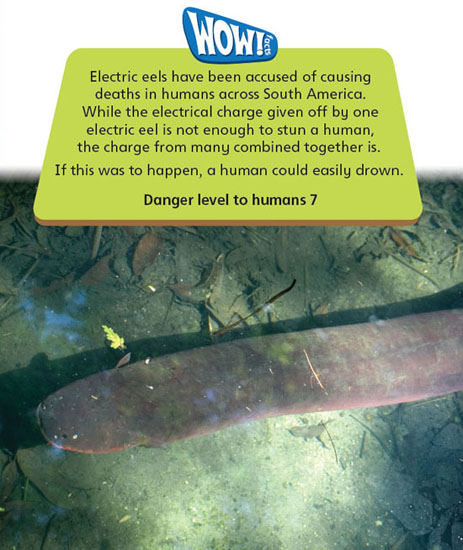
 The giant freshwater stingray is one of the most powerful predators lurking in fresh water. It is also one of the worlds largest freshwater predatory fish.
The giant freshwater stingray is one of the most powerful predators lurking in fresh water. It is also one of the worlds largest freshwater predatory fish.
The giant freshwater stingray can grow to over 4.8 metres in length and can weigh more than 450 kilograms! These stingrays lie at the bottom of rivers waiting for their prey to come to them. Giant stingrays are slower than other predators so they save their energy and wait until the right time to strike. Giant stingrays can be found in northern Australia, Borneo, New Guinea and Thailand. 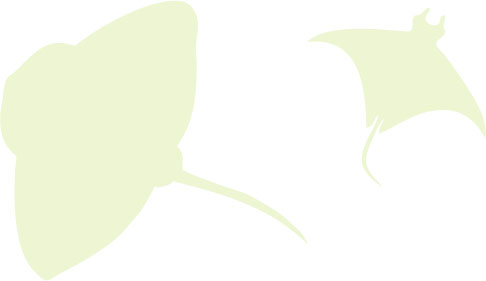





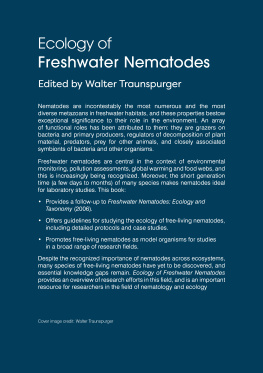










 The anaconda is one of the largest snakes on the planet. It can grow to an incredible 9 metres long and can weigh up to 250 kilograms. Anacondas are found in many countries in South America. They live in rivers and swamps and can stay under water for up to ten minutes at a time before coming up to breathe.
The anaconda is one of the largest snakes on the planet. It can grow to an incredible 9 metres long and can weigh up to 250 kilograms. Anacondas are found in many countries in South America. They live in rivers and swamps and can stay under water for up to ten minutes at a time before coming up to breathe. 
 Some snakes kill their prey by injecting venom through a bite but not the anaconda. The anaconda is a member of the constrictor family.
Some snakes kill their prey by injecting venom through a bite but not the anaconda. The anaconda is a member of the constrictor family. 

 Bull sharks but dont they live in salt water? Yes, correct, but one fact that you might not know is that they can also survive in fresh water!
Bull sharks but dont they live in salt water? Yes, correct, but one fact that you might not know is that they can also survive in fresh water!  Bull sharks are among the most aggressive sharks in salt water.
Bull sharks are among the most aggressive sharks in salt water.
 Teeth of a bull shark Scientists have studied why some bull sharks have made freshwater rivers and lakes their home. It is believed that large lakes are a safe place for them to breed and raise their young. With a huge abundance of food, bull sharks can easily survive in the freshwater habitats of Australia and America. The bull shark survives in fresh water by storing salt and using it slowly. This unique process allows the shark to move in and out of freshwater river systems as and when it pleases.
Teeth of a bull shark Scientists have studied why some bull sharks have made freshwater rivers and lakes their home. It is believed that large lakes are a safe place for them to breed and raise their young. With a huge abundance of food, bull sharks can easily survive in the freshwater habitats of Australia and America. The bull shark survives in fresh water by storing salt and using it slowly. This unique process allows the shark to move in and out of freshwater river systems as and when it pleases.
 The diving bell spider is a truly remarkable freshwater predator and is unique among spiders. When you think of a spider, it is out of water. Right? Well, not this one The diving bell spider is the only spider in the world to spend its life under water.
The diving bell spider is a truly remarkable freshwater predator and is unique among spiders. When you think of a spider, it is out of water. Right? Well, not this one The diving bell spider is the only spider in the world to spend its life under water. 

 This spider still needs to breathe air in order to survive so how does it do it? First, it spins a dome-shaped web between two plants under water. It then uses the hair on its legs to trap air in when it travels to the surface.
This spider still needs to breathe air in order to survive so how does it do it? First, it spins a dome-shaped web between two plants under water. It then uses the hair on its legs to trap air in when it travels to the surface.
 The electric eel is without a doubt one of the weirdest looking freshwater predators on the planet. Found in many rivers in South America, the electric eel can cause serious damage to any living creature that gets in its way. This is because the electric eel has the ability to generate 500 volts of electricity from its body!
The electric eel is without a doubt one of the weirdest looking freshwater predators on the planet. Found in many rivers in South America, the electric eel can cause serious damage to any living creature that gets in its way. This is because the electric eel has the ability to generate 500 volts of electricity from its body! 

 When the eel releases electricity into the water, all the surrounding animals become stunned some more than others, depending on their size. The electric eel can then pick off its prey more easily.
When the eel releases electricity into the water, all the surrounding animals become stunned some more than others, depending on their size. The electric eel can then pick off its prey more easily.
 The giant freshwater stingray is one of the most powerful predators lurking in fresh water. It is also one of the worlds largest freshwater predatory fish.
The giant freshwater stingray is one of the most powerful predators lurking in fresh water. It is also one of the worlds largest freshwater predatory fish.